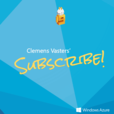
Summary: At the Build 2011 conference I teased a prototype at the very end of my talk. That prototype was called Iguazu and was an attempt at creating a push notification abstraction for Windows, Windows Phone, iOS, and Android that tackles the architecturally hardest challenges for developers building Apps for large web and services properties like news outlets and sports organizations that need to notify users of events at huge scale of many millions and with minimal possible latency. Fast forward to the present day, and Iguazu has become a real thing, thanks to an enormously engaged team who built a brand new service from scratch and plugged it into the Service Bus infrastructure. Today we're taking the wraps off the Service Bus Notification Hubs preview. Service Bus Notification Hubs are an intrinsic feature of Windows Azure Service Bus and are different from other push notification services in four key areas: Complete client registration management. Your backend application does not need to worry at all about device-ids or channels or other particulars of push notifications and doesn't need to cooperate in management. It doesn't even have to be a web app that's publicly accessible. Platform independence. Service Bus Notification Hubs allow cross-platform push notifications so that iOS Alerts and Windows Live Tiles can be targeted with a single event message. Broadcast and tag-based Multicast - Service Bus Notification Hubs are optimized around automatic notification broadcast to many thousand devices with low latency. One message in, thousands of notifications out. Mass customization - Notification Hub notification templates allow for customization of notification delivery for each individual registration, allowing each instance of a client App to choose how it wants to receive events. In this preview, Notification Hubs are able to push notifications to Windows Store apps and iOS ap
